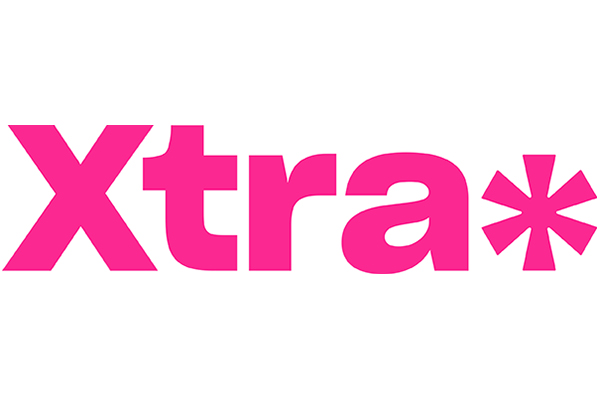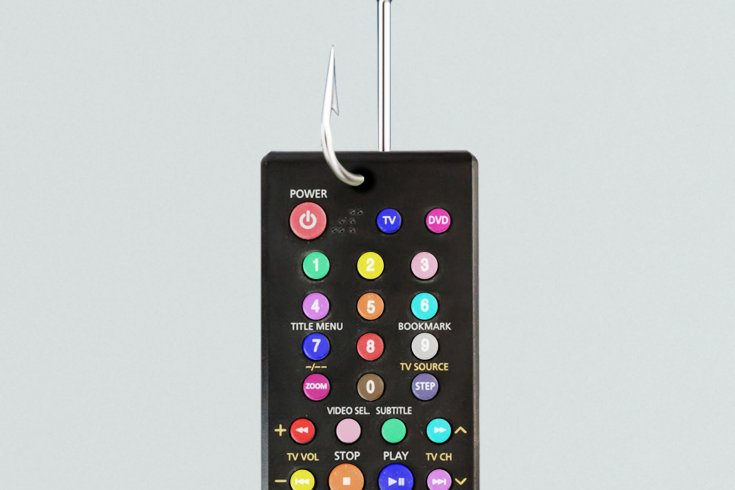
“Red wine, I just want to kiss girls, girls, girls,” cooed Rita Ora in the 2018 music video for her single “Girls.” Supine on a chaise longue at the heart of a lush, all-lady garden party, Ora staged a Sapphic to-do replete with heavy flirting between her collaborators Cardi B, Bebe Rexha, and Charli XCX. This gay-until-sober anthem became the latest pop song (largely written by men) to objectify queer love to raise eyebrows, heart rates, and ratings. Meanwhile, on TV, the CW Network’s teen noir, Riverdale, has featured so many same-sex clinches in its three-year run that the town should consider setting up a PFLAG chapter. Then there’s the little matter of an alleged big-time love affair between Harry Potter wizards Albus Dumbledore and Gellert Grindelwald (“we were closer than brothers,” hint-hinted Jude Law, as Dumbledore, in last year’s Fantastic Beasts: The Crimes of Grindelwald).
Trouble is, queer people are usually the ones footing the bill.
Courting pink money and capitalizing on the mainstreaming of LGBTQ culture is one thing. Offering little to nothing in return is something else entirely. Queerbaiting—when pop culture creators plant the seed of same-sex attraction to draw LGBTQ support but don’t allow that attraction to thrive—enables those employing it to reap the benefits of queer fandom without risking backlash from conservative quarters. The origin of the term is a matter of some debate, but it seems to have roots in the early 2010s, when followers of generally male-centric series (like Sherlock or Supernatural) objected to the lack of queer content in the shows, despite obvious chemistry between the leads.
Queerbaiting is now used more broadly to object to the use of queer characters as plot devices in TV and film, as well as to identify this type of problematic behaviour on the part of artists who engage in it. The tactic typically employs women, or is employed by women, who appeal to the male gaze. (The scarcity of butch women, nonbinary, and genderqueer folks involved in queerbaiting is blatant.) And straight women are some of the most prominent practitioners: think back to the Madonna-Britney-Christina three-way at the 2003 MTV Video Music Awards. The performance may have been business as usual for sex-positive and controversy-courting Madonna, but the girl-on-girl-on-girl kiss seen around the world was another example of how women are intended to be viewed and consumed—especially by a straight male audience.
This type of overt queerbaiting—or, more specifically, “dykesploitation”—should make us pause, even when it’s acted out by queer-identified artists and their allies. (See: a #twinning St. Vincent and Dua Lipa standing really, really close onstage at this year’s Grammys.) The issue isn’t the kiss or the closeness but how far these acts are pushed without delivering on the implicit pledge being extended to queer women: we are just like you. When celebrity women unleash a campaign of voyeuristic, lesbian titillation, who exactly is it serving?
For LGBTQ viewers, the problem with queerbaiting is that it never follows through on its underlying promise of satisfaction. However elaborate the set-up and breathless the buildup, Betty won’t ever really fall for Veronica, and Gay Britney isn’t going to happen. That was never the end game. Queerbaiting feeds on hope, hinging on a possible future rather than a present reality. As a result, it keeps the queer female viewer—the ultimate pawn—in stasis, weighed down rather than buoyed by her futile faith in a happy ending.
This relentless tease reinforces the notion that queer desire can never be fulfilled or fulfilling and that it doesn’t deserve to be. Queer people and their needs aren’t deemed valid or valuable. Worst of all, perhaps, is the gaslighting involved. Did you, the viewer, really see that connection—that sexual tension—onstage, on the page, in the video, in the show? Maybe it was all in your head.
This form of trickery capitalizes on insecurity and dread. Most queer people have, at one point or another, hesitated to express interest in another person we think might be queer for fear that they are not. At best, they will rebuff us, embarrassed. At worst, they will cause us harm. Reading between the lines to suss out another party’s sexual orientation has been a requirement for many queer people. There can be hope, but there can be no assumption of interest.
And, in past decades, it was important to leave a space for hope, however formless. During eras when singers and actors and characters in books or on screen stayed in the closet and censors eradicated even the slightest whiff of homosexual behaviour, the mere possibility of queer love and queer sex was revolutionary. When erasure and demonization were the norm, subtext was the only way to tell queer stories. But, these days, when there’s visibility but no payoff or the queer relationships portrayed are wholly unbelievable (or tragic), what is being offered is nothing more than a hollow manipulation. Enough of that, then. If an artist is taking without giving, queer audiences have the right to protest. You cannot swim and avoid getting wet.
To borrow from American feminist film critic Molly Haskell, “to be unable to express another point of view is a deficiency.” When she wrote that in the 1987 second edition of her book From Reverence to Rape: The Treatment of Women in the Movies, she meant the all-too-common absence of the female point of view. But her words can easily be applied to the case of queer women today. Put another way, the male gaze—a term coined by Haskell’s contemporary, the British feminist film theorist Laura Mulvey—is still the default. “The determining male gaze projects its fantasy on to the female figure which is styled accordingly,” wrote Mulvey in her seminal 1975 essay, “Visual Pleasure and Narrative Cinema.” Women are erotic objects, spectacles waiting to be consumed—by men.
More than forty years later, the lens through which our society views straight, lesbian, and bisexual women remains distorted. When looking at how women are represented in popular culture, one has to ask: Whose point of view is being expressed? And when women do have a modicum of control over their own images, how influenced are they by the notion that a woman’s overarching success is predicated upon how she is viewed by the heterosexual men who continue to hold power in entertainment industries?
That isn’t to say straight female artists don’t want or appreciate queer female fan bases, or that LGBTQ audiences don’t have cultural and financial clout. It’s that the goal of the gatekeepers, and the culture at large, is never to fascinate queers alone.
But now, it seems, queer audiences have begun to push back. Rita Ora was hoisted by her own petard when she compared “Girls” to Katy Perry’s problematic 2008 bop “I Kissed a Girl,” a song that now even Perry admits has lingered past its expiration date. Ora attempted to recover from criticism with a vague statement about sexual fluidity, only to be trounced by fellow pop star Hayley Kiyoko. Living up to her nickname, Lesbian Jesus, Kiyoko fired back against the song’s “dangerous message” with, “I don’t need to drink wine to kiss girls; I’ve loved women my entire life.”
Meanwhile, a less obvious spin on the is-she-or-isn’t-she trope is Ariana Grande’s video for the song “break up with your girlfriend, I’m bored,” which ends with her at a party making out with…a woman who looks a great deal like her. Released on the heels of “thank u, next,” a song that features lyrics describing a new romance—“I met someone else, we havin’ better discussions…her name is Ari”—it can be argued that she’s riding a wave of self-love, however disappointing that may be for queer audiences who hoped to include Grande in their ranks. But all is not lost: at the beginning of April, Grande (and her best friend Victoria Monét) dropped “Monopoly,” a surprise single on which Grande sings, “I like women and men.” That appeared to be an unambiguous statement, until this follow-up tweet, about labelling herself: “I haven’t before and still don’t feel the need to now which is okay.” Until Grande comments further, fans will simply have to wonder if “Monopoly” is a bisexual anthem or just another gal-pal-driven question mark.
With their music, Ora and Grande have successfully positioned themselves as unabashedly sexual beings. That’s not the issue—it’s the manner in which they express their purported fluid sexuality that borders on disingenuous. It’s significant that many of the pop stars who queerbait—from Madonna and Britney to Gaga to Grande—are icons for gay men. There seems to be a sense that because these women have a devoted gay male fan base, they have permission to play at queerness. When they do, though, both queer women and queer men lose out. At face value, the Grandes’ and the Gagas’ lightweight approximation of same-sex attraction may appear designed for LGBTQ audiences, but it’s ultimately offering up a toothless, trivial version of queer love intended to delight the artists’ larger base: straight people.
This toying with queer fans is a zero-sum game, even when played with zeal by an out, critically beloved smokeshow like St. Vincent/Annie Clark. Her performance with Dua Lipa at the Grammys had the women circling each other as they cycled through a mash-up of Clark’s “Masseduction,” Aretha Franklin’s “Respect,” and Dua Lipa’s “One Kiss.” Judging by the flurry of libidinous tweets that followed, the performance appealed as much to Clark’s queer fans as her heterosexual ones. When asked later by Rolling Stone why she picked those particular songs, Clark said, “They’re about seduction and sex and all those things.”
There’s no denying it, but it’s worth remembering that, in the public sphere of pop culture, stories of the girl who gets the girl remain rare. And that queer sex and seduction are about much more than a suggestive look or two (what Clark refers to as the “six feet to six inches between us and our eyes”).
There are few examples of contemporary female queerbaiting in music, film or TV as heavy handed as the ones in Riverdale. As early as the pilot episode, in a move that goes absolutely nowhere, Betty and Veronica kiss at, of all places, cheerleading tryouts. At first, it appeared to be a meta move, a wink at the sweeps-week storylines of shows past, driven home by queen bee Cheryl Blossom responding dryly, “Faux lesbian kissing hasn’t been taboo since 1994.”
By then having Blossom come out and get a girlfriend (Toni Topaz) in season two, Riverdale was well on its way to establishing its queer bona fides. However, since becoming a couple, the pair’s screen time has been almost nonexistent. That hasn’t stopped the network from exploiting the relationship in promos, a double standard that proves that even when the showrunner is a gay man, as is the case with Riverdale, conventionally attractive young women exist to project a vision of idealized femininity held by men at the top.
In the 1980s and ’90s—to pick up what Cheryl Blossom is putting down—queerbaiting was shorthand for edginess, and playing gay could damage your career (as it did Laura Dern’s after she starred as Ellen DeGeneres’s love interest on Ellen). Today, the rules of engagement have shifted. With just two-thirds of young people identifying as solely heterosexual, there appears to be ample room for performers to move along the spectrum of sexuality without reprisal from audiences. But what about the audience members facing reprisal themselves? How seen are they by artists who don’t quite grasp that playing at gay means little if you’re able to leave it behind when the lights come on?
For many real-life queers, living openly remains a perilous undertaking, a vastly different proposition than the safety of nebulous or performative same-sex attraction. When people are tortured and killed for being in consensual same-sex relationships, we deserve more than “queer” idols who are only ever gay on a stage.
It’s tempting to draw some sort of connection between subpar LGBTQ representation and the state of the world. While conservative governments are winning elections and rising populism is correlated to more anti-LGBTQ violence, streaming giant Netflix keeps cancelling the inclusive shows with compelling queer female characters on its roster (RIP One Day at a Time, Everything Sucks!, and Sense8). But, as long as there is pop culture, there will be people creating queer or queer-adjacent content—and there will be people angling to catch a glimmer of gay in every story and every song.
Reading queerness where none was intended is only natural; queer women consume and interpret culture through the viewfinder of their own experiences and realities. (Doubters need simply google, “are Peppermint Patty and Marcie lesbians?” or scan a few of the articles devoted to the relationship between Cate Blanchett and Sandra Bullock’s characters in the lesbian fantasy come to life, Ocean’s 8.) Where speculation flourishes, disappointment is always a risk. But at least it’s a self-inflicted risk.
The danger lies in situations where queer connotations exist and are leveraged—but, once they’re pointed out, they are downplayed, never confirmed, or flatly denied. It’s a betrayal of trust, however tenuous. Queer audiences do not need “representation” at all costs. Some prices are too steep to pay.
This article was originally published in Xtra.






